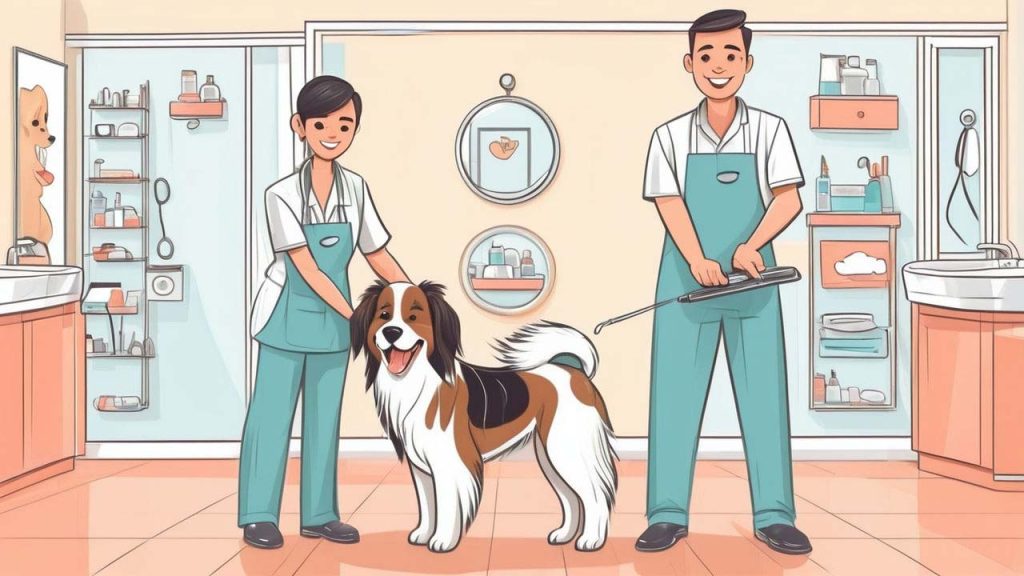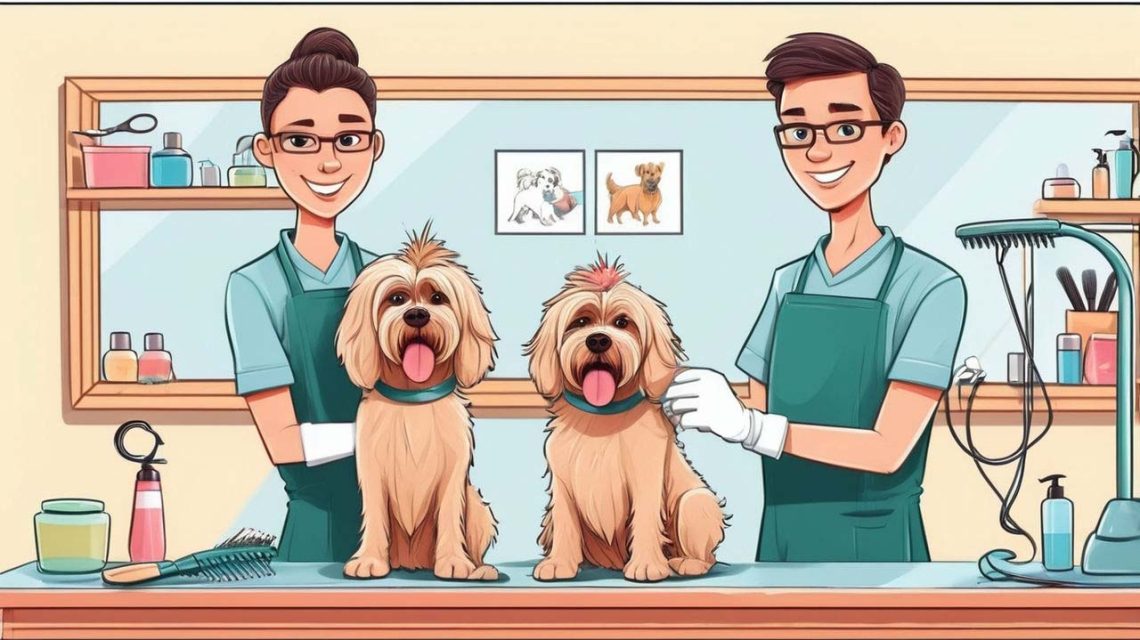A career in dog grooming is rewarding for pet lovers looking to combine their passion with a stable income. Enrolling in a dog grooming program can provide the training, skills, and certification needed to excel in the industry. This guide breaks down what to expect in a dog grooming program, the skills you’ll gain, and the career opportunities available to certified groomers.
Why Choose a Dog Grooming Program?
Dog grooming programs provide a structured, hands-on approach to learning the skills required to become a successful groomer. These programs cover essential topics, from basic grooming techniques to handling anxious dogs, setting you up for a promising career.
A Growing Demand for Skilled Groomers
With more pet owners than ever, the demand for skilled dog groomers continues to grow. By enrolling in a grooming program, you’ll gain credibility and marketable skills that will make you highly sought after in the pet care industry.
Turning Passion into a Profession
For animal lovers, dog grooming offers a chance to work with pets every day. A grooming program provides both the skills and confidence needed to handle a variety of breeds, ensuring a satisfying career that lets you combine your passion with your profession.

What to Expect in a Dog Grooming Program
Dog grooming programs offer comprehensive courses that prepare you for the real world of pet grooming. Here’s what you’ll typically find in a structured program.
1. Learning Canine Anatomy and Behavior
Understanding a dog’s body structure and behavior is essential for grooming safely and effectively. Most grooming programs start with an overview of canine anatomy and basic behavioral training.
Key Aspects of Canine Anatomy
You’ll learn the physical layout of a dog’s body, which helps prevent accidental injury and ensures you can handle dogs safely. Understanding bone structure, muscle placement, and joint areas is crucial for safe and comfortable grooming.
Recognizing Behavioral Cues
Learning to recognize a dog’s body language helps you assess their comfort level and adjust your approach. Grooming programs teach handling techniques that make the experience smoother for dogs, especially those that are anxious or nervous.
2. Mastering Grooming Tools and Techniques
Grooming programs cover a wide range of tools, from clippers to brushes, and teach students how to use them effectively. Proper use of these tools is key to delivering professional results and ensuring safety.
Essential Grooming Tools
You’ll learn to work with clippers, scissors, de-matting tools, nail trimmers, and brushes. Each tool requires a different approach, and your program will provide hands-on practice, so you’re comfortable and skilled with each one.
Tool Maintenance and Care
A dog grooming program also teaches tool maintenance, which ensures both the longevity of your equipment and the safety of the pets. Keeping clippers sharp and brushes clean is a best practice that you’ll carry into your career.
3. Bathing, Brushing, and Blow-Drying Techniques
Mastering the basics is essential, as each grooming session begins with a bath, brushing, and drying. Programs cover these core techniques thoroughly, ensuring every dog looks and feels its best.
Bathing Techniques for Different Coat Types
From smooth-coated breeds to long-haired dogs, each coat type requires a different bathing method. Grooming programs teach you how to use the right shampoos, conditioners, and techniques for each type, keeping coats healthy and shiny.
Effective Brushing and Blow-Drying
Brushing and drying methods vary depending on the dog’s coat type and length. A grooming program explains these methods and teaches blow-drying techniques that prevent matting, giving the coat a polished, professional finish.
4. Nail Trimming, Ear Cleaning, and Dental Hygiene
Beyond fur care, a dog grooming program includes hygiene basics that enhance a dog’s overall health. This training is essential for delivering a complete grooming experience.
Safe Nail Trimming Techniques
Nail trimming is a delicate task that can cause discomfort if done improperly. Grooming programs teach safe trimming techniques, ensuring you can trim nails to the right length without cutting the quick.
Ear Cleaning and Dental Care
Ear cleaning and basic dental care are other essential skills covered in grooming programs. Regular ear cleaning reduces the risk of infection, especially in breeds prone to ear issues. Additionally, understanding how to brush a dog’s teeth contributes to their long-term health.
5. Breed-Specific Grooming and Styling
Each dog breed has unique grooming requirements and standards. A good dog grooming program covers breed-specific techniques so you can meet the expectations of clients with purebred or show dogs.
Understanding Breed Standards
Grooming programs often include lessons on breed standards, teaching students the specific cuts and styles expected for each breed. Recognizing and executing these styles sets you apart as a groomer with specialized knowledge.
Styling Techniques for Popular Breeds
From Poodle trims to Terrier cuts, grooming programs teach the styles most in demand. By mastering these techniques, you’ll be able to offer a range of styling options to suit each dog’s breed and personality.
6. Calming and Handling Techniques for Anxious Dogs
Many dogs feel anxious during grooming sessions, so knowing how to calm and handle them is essential. Dog grooming programs teach calming techniques that make the experience more enjoyable for pets and easier for groomers.
Techniques for Handling Nervous Dogs
Grooming programs train you to recognize signs of anxiety, such as trembling, pacing, or whining. By learning techniques like slow movements, soft voices, and positive reinforcement, you can help dogs relax during grooming.
Building Trust with Every Pet
Grooming programs emphasize trust-building, which is crucial for long-term success. By creating positive experiences, you encourage repeat clients and help dogs feel more comfortable with each visit.
7. Sanitation, Safety, and Best Practices in the Grooming Environment
A professional dog grooming program also covers sanitation and safety protocols, essential for maintaining a clean, safe workspace for both groomers and pets.
Sanitation and Cleaning Procedures
Grooming programs stress the importance of cleaning and sanitizing tools and work areas between clients. Proper sanitation practices prevent the spread of infections and create a healthy environment.
Safety Standards and First Aid
Safety is a top priority in grooming. Most programs include basic first aid and safety standards, teaching you how to handle minor injuries and avoid accidents. These skills are critical, especially when working with multiple dogs in a busy environment.
Certification and Career Options After Completing a Dog Grooming Program
Many grooming programs offer certification, which helps you stand out in the job market. Certified groomers are more trusted by clients and employers, making certification a valuable asset.
The Benefits of Certification
Certification shows that you’ve received formal training and met the standards of a professional grooming program. Many employers prefer certified groomers, and it builds trust with clients who may be nervous about leaving their pets in someone else’s care.
Career Paths for Certified Groomers
Graduates of grooming programs can pursue various career paths, from working in salons and veterinary clinics to starting a mobile grooming service. Some groomers even open their own salons, enjoying the flexibility and rewards of owning a business.
How to Choose the Right Dog Grooming Program
Selecting the right grooming program is essential for a successful start. Here are some tips for finding the best program for your needs.
Look for Accredited Programs
Accreditation ensures you’re receiving high-quality instruction. Accredited programs follow industry standards and are recognized by employers, which boosts your credibility as a groomer.
Consider Hands-On Training Opportunities
Hands-on experience is invaluable in grooming. Choose a program that offers plenty of live practice with dogs under the supervision of experienced instructors. Real-world practice builds confidence and prepares you for the demands of the job.
Check for Flexible Scheduling Options
If you have other commitments, look for programs that offer flexible schedules, such as part-time or weekend classes. Some programs also provide online coursework for theory, with in-person labs for hands-on training.
Frequently Asked Questions About Dog Grooming Programs
How long does a dog grooming program take?
- Programs vary, typically lasting from 8 weeks to several months, depending on the level and certification offered.
Is certification necessary to become a groomer?
- Certification isn’t always required, but it’s highly recommended as it provides credibility and increases job opportunities.
What should I expect to pay for a dog grooming program?
- Costs range from $500 to $5,000, depending on the program’s length, depth, and location.
Are online dog grooming programs effective?
- Online programs can teach theory, but hands-on experience is essential. Look for programs that combine online coursework with in-person labs.
What career opportunities are available after completing a program?
- Certified groomers can work in salons, vet clinics, mobile grooming, or even start their own businesses.
Can I specialize in specific breeds after completing a program?
- Yes, some programs offer advanced classes in breed-specific grooming, allowing you to specialize further and attract specific clients.


